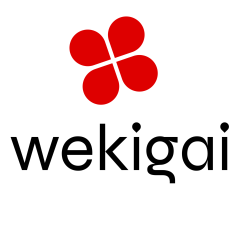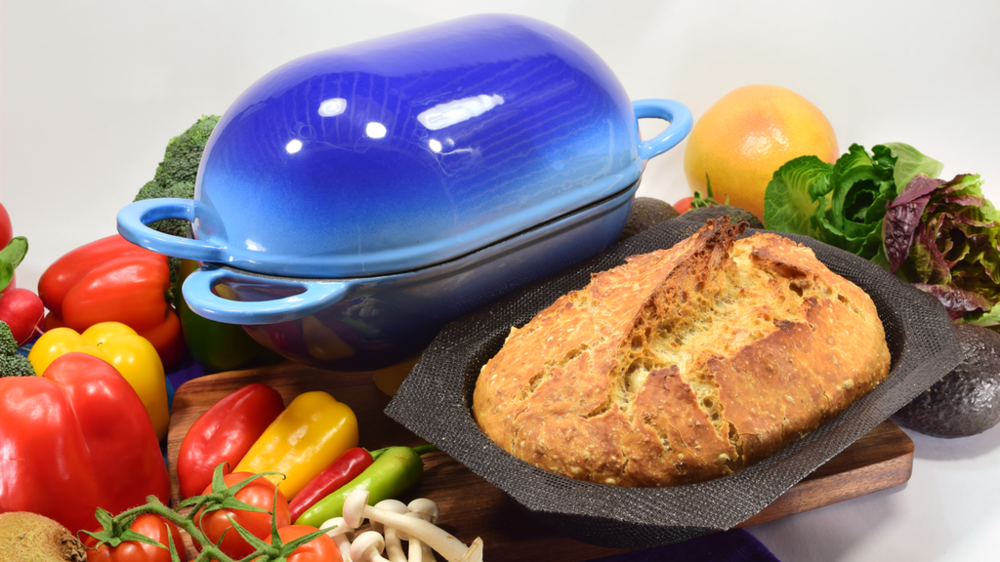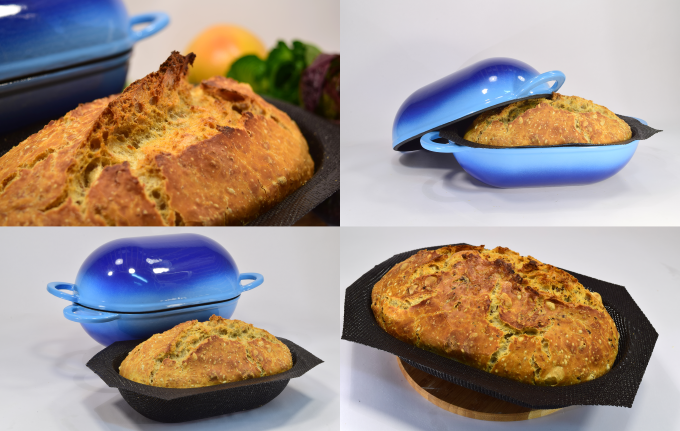-
Posts
38 -
Joined
-
Last visited
Content Type
Profiles
Forums
Store
Help Articles
Everything posted by trfl
-
Thanks everyone who pitched in with helpful comments and feedback. We are happy to announce that the LoafNest Kickstarter campaign is now live. You can see it on this link. Please back us and help to spread the word to your contacts and social media. Thanks again!
-
I do understand and empathize with the apprehensions about offset handles. After all, they are a new idea and it is hard to guess if it works for you or not when you have nothing similar to compare against. Only way to know for sure is to use one. We have been using our prototypes for a few months now baking almost every day. We really do not find any issues. Of course, we have normal physical abilities and I can not judge how hard or easy it is going to be for someone with arthritis. We will keep a keen ear on the feedback of the first version. There is a good reason behind those offset handle: * Our lid is taller and heavier than a normal casserole lid. Since the bread raises to almost double its initial height, we had to make it taller and hence heavier. * We need to be able to remove the lid easily when the pan is hot (to place the liner and pour the dough) and put it back again. This step is done wearing gloves or mitts. So, if the handles are lined up, the space between top and bottom handle needs to be quite a lot to allow for thick finger+mits to get into the gap. * If we want to provide such a gap on our product (which is overall about 15cm/6inch) tall, we would end up with a funny looking casserole. Also, there are difficulties in manufacturing handles far away from the rim in cast iron. That is why you almost always see handles on the rim for cast iron. It is possible, but difficult and leads to inferior quality [For enameled sheet iron, like the one in the picture by andiesenji, that is much easier because they are made in a different way]. So, with all these constraints, we came up with offset handles so that both sets of handles can stay on the rim but can still allow easy lid removal and putting it back while wearing thick gloves. I hope I have better explained the background behind offset handles.
-
By better we mean more flavorful, more tasty, more textured bread. Most supermarket bread (at least here in Europe) tastes like cotton. By healthy we mean more appropriate levels of salt and lack of preservatives/additives and having the knowledge of what goes into the bread. For example in the Netherlands, where we live, a recent study found illegal amounts of salt in 'artisan' bread from many bakery chains. [Source] By reducing the barrier to bread baking at home, we believe we help people to achieve better taste and health. Of course, the knowledge of knowing what you eat is invaluable for a healthy lifestyle mindset. By the way, we estimate our loaf costs about 75 cents (ingredients and electricity/gas) whereas an equivalent loaf will cost 2.25 (Supermarket premium bread) to 5.00 Euro (boutique artisan bakery). So, we believe it is also quite economical in the long run.
-
Yes, baguette, dinner role or mini-ciabatta (or other similar breads) are a possibility. If we succeed in our Kickstarter campaign, they surely on our pipeline. Thanks for the suggestion!
-
We chose LoafNest for the reason that the liner does look a bit like a bird's nest and we wanted to give a connotation of a bread loaf 'hatching' out of it. Luckily for us, (from my understanding), trade marks don't work like that. We would be in trouble if a consumer who went to buy a thermostat ends up buying a bread baker instead :). I am simplifying a bit, but that is the intent behind the law. Moreover, we call it LoafNest as one word. Of course, if google came knocking on our doors, we will just change the name because we can not afford the lawyers and they sure can. We think the chance is astronomically low though.
-
Thanks for the encouragement! Hope you signed up on the newsletter to get the earliest deal. Offset handles were indeed a deliberate design choice for better safety and unique design identity. The casserole is multi-usable like any other casserole (as long as you have a heat source that fits) for example for braising. The liner is intended for bread making only though. The silicone liners are rated to last 1000 uses and normally last longer if properly cared for. They don't require special maintenance, just was it in a dishwasher and keep them dry and away from mechanical abuse. We will of course make separate liners available (for example on Amazon) if the Kickstarter campaign is successful.
-
Offset handles may take some getting used to, but they do work really well. We designed them so that you are forced to hold all the 4 handles for a higher stability and safety. The handles are not that large (~1.5 inch / 4cm) so can fit easily into each hand. But I respect your personal preference. It is the Coke v/s Pepsi or as in this forum, blue v/s brown thing Indeed, normally silicone is a very good insulator and the bottom of loaves needs much do be desired. But perforated silicone is a complete different story. Firstly, the liner still leaves still ~60% area uncovered. This allows for much better radiative, conductive and convective heating. Secondly, the perforation allows allows surface moisture to escape that helps to achieve higher temperature as well as good browning. These liners are used in professional/industrial kitchens specifically for bread baking. We are trying to bring it to home kitchen. I posted a crumb picture earlier in the thread. I don't have a side-by-side but I am sure you agree it is a nice crumb. The top and bottom do nest but not all the way since cast iron is quite thick. Also, I would not do it to avoid accidentally scratching/chipping the enamel. On the positive side, we do use it as a bread box to store left over bread. It is beautiful enough (we think) to keep on the counter. You can use it as a normal casserole to steam or braise but I would do that without the liner because the liner is meant to be only for the bread. The 'sealing' without liner is still good enough like a normal casserole. The top of the casserole is designed with condensation groves (you can see it one of the pictures in the gallery on our website) that prevent all the condensation to drip back in one place. Due to the elongated shape, it may be hard to find a suitable stove-top that can fit nicely. We use with a induction stove that has a feature to combine two small heaters into one big heater. You can also use it in an oven. It works as you would expect a normal enameled cast iron to work. At this moment, we don't have a metal rack planned, but I do like the idea. May be in future? There is no worse steam collection due to the shape compared to other dutch ovens. The burn risk depends on the temperature (which is same as any other Dutch oven method) and amount of steam which is smaller in our case since the loaf will occupy most of the available space near the end. Thanks a lot for all the questions, comments and ideas.
-
In our current implementation, we are not expecting any fermentation/proof to take place within the liner. We did try that in an earlier version but since we then had to use a non-perforated liner, the browning and crunchiness of the bottom was affected. It was 'OK' but we were not satisfied with that. In fact this was our first thought since we even wanted to eliminate the 'pour' step and just place the liner with dough into the casserole. But the results we achieved were not upto what we wanted to make. High hydration dough (85+ %) does indeed migrated a little bit into the holes. But since there is casserole stopping the migration immediately and since the dough there is solidified in seconds, it ends up giving those nice bumped pattern I tried to show in an earlier picture.
-
And one last image showing crumb and crust baked in earlier prototype of LoafNest. This was not a no-knead bread but traditional bread baked in our baker.
-
I will come back tomorrow with more detailed answers for the technical questions. In the meanwhile, a couple of shots of the bottom of the loaf. The first two are made with the final product (hence the correct shape). This is the same loaf that is sliced in the gallery on our website. So you can see the browning on bottom is quite close to that of the top. The third image is from an earlier prototype (of different shape). The loaf is normal no-knead loaf. You can again see the browning on the bottom. The perforated mesh gives a nice dotted structure similar to professional tray baked baguettes and loaves. This does not affect the release of the loaf. And lastly, a crumb shot from the older prototype made with our method without second raise. The picture is not good enough for 'marketing' but I am sure folks on this forum can see beyond the stained chopping board
-
We chose blue to stand apart in a crowd of red and orange casserole crowd *coughcoughlecreusetcough* . Being small, we are also a bit limited by how many color variants we can have. That said, as a Kickstarter stretch goal, we would not rule out additional colors or a limited edition color. Thanks a lot! We hope it does too.
-
Thanks for the kind words. I am glad you like it. We are still fine tuning the final pricing. I dont mean it as a self-serving promotion, but there WILL be a Kickstarter reward that will be less than 100 Euros for a limited number of buyers. I will surely post a link here when the campaign goes live (in around 2 weeks) but you can also sign up for the newsletter on our site.
-
Dear fellow bakers, We have been baking no-knead bread at home for several years and as a family of scientists and engineers, we consistently tried to make it even more easier and convenient. We liked what we ended up with so much that, I decided to start a small company (based in Eindhoven, Netherlands) to make a new bread kit product out of it. I am seeking your help to know your opinion of the product and how the story is told. LoafNest is an improvement on no-knead Dutch oven bread making. We took perforated silicone liner designed for professional bread baking and put it into a uniquely designed cast iron casserole. With this improvement, there is no need for shaping or second raising of the bread. You just mix, let the dough raise, pre-heat, pour the dough, bake and done! So, LoafNest is a no-knead, no-mess, no-cleanup solution for convenient and practical bread making. The perforated silicone liner is from the same company that makes Silpat mats. Our liner is a more advanced version with perforations that allow radiative, conductive and convective heat to all sides of the bread. It is also rated to a higher temperature (260C/500F) With less than 5 minutes of active work that can fit into a busy schedule, we hope to reduce the entry barrier for people who are willing to make bread. Our primary targets are people who buy expensive premium bread but want to make their own premium bread at home or people who use bread machines and want to eat better bread. While it is not a primary target, we also believe this is a nice solution for experienced bakers who want to use a high-humidity, high thermal mass baking environment. You can find the details and more images on http://trfl.nl/LoafNest [still a little bit work in progress] and http://trfl.nl/loafnest-gallery What are your impressions of the product? Visually and functionally? What are your thoughts on how the story is told? Any improvement to resonate better with people who are thinking of starting to bake their own bread? Any thoughts on pricing? I would be grateful to your feedback and suggestions. I am sure, in the end, we all want more people to eat better and healthier bread. So please support me in this endeavor.





